Optimise The Lifespan Of Your Hebe With Regular Trimming: 4 Steps To Follow


Ed is a horticultural therapist, professional gardener and writer. Ed has a BSc in Occupational Therapy from Coventry University and a Diploma in Social and Therapeutic Horticulture (DipSTH) via Thive, the RHS and Pershore College. Ed runs a community kitchen garden in West Sussex, where he leads horticultural therapy sessions.
Reviewed By COLIN SKELLY

Colin is a Horticulturist and Horticultural Consultant with experience in a range of practical and managerial roles across heritage, commercial and public horticulture. He holds the Royal Horticultural Society’s Master of Horticulture award and has a particular interest in horticultural ecology and naturalistic planting for habitat and climate resilience.
Contributions From CHARLIE BEWLEY

With over 35 years of experience growing hebes, Charlie Bewley is the Owner of Hic Bibi Wholesale Nurseries, based in Chorley, UK.
IN THIS GUIDE
HEBE GUIDES
Hebes are evergreen shrubs commonly grown for their visual appeal, with stunning purple, pink or white flowers that bloom from spring until autumn.
There are several benefits to pruning hebes, including keeping the shrubs to an attractive shape, removing any spent and untidy flowers and preventing them from becoming leggy.
“Hebes are generally quite tidy shrubs that require little maintenance,” explains Horticultural Consultant Colin Skelly.
“However, I like to put in a few pruning sessions during the year to keep them looking tight in growth. I have found that this also optimises life span.”
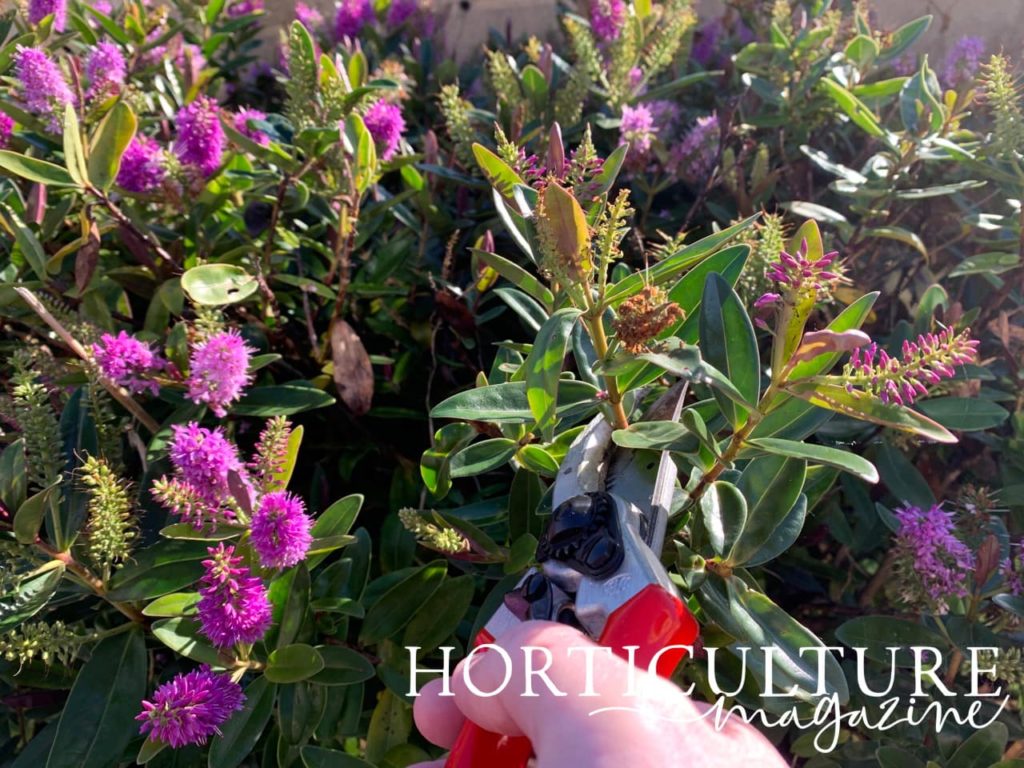
Pruning hebes is fairly simple if you follow a simple process for trimming the plant:
- Deadhead any spent flowers once faded.
- Prune hebe shrubs lightly in late summer, to help keep their shape and remove any dead or damaged wood.
- Prune again in the spring back to healthy, new growth.
- Hard prune hebe shrubs that look worn and leggy to attempt rejuvenation.
This process is explained in more depth below.
| Difficulty | Easy |
| Equipment Required | Gloves, secateurs, shears |
| When To Prune | August, September, October, March, April |
When To Prune Hebe
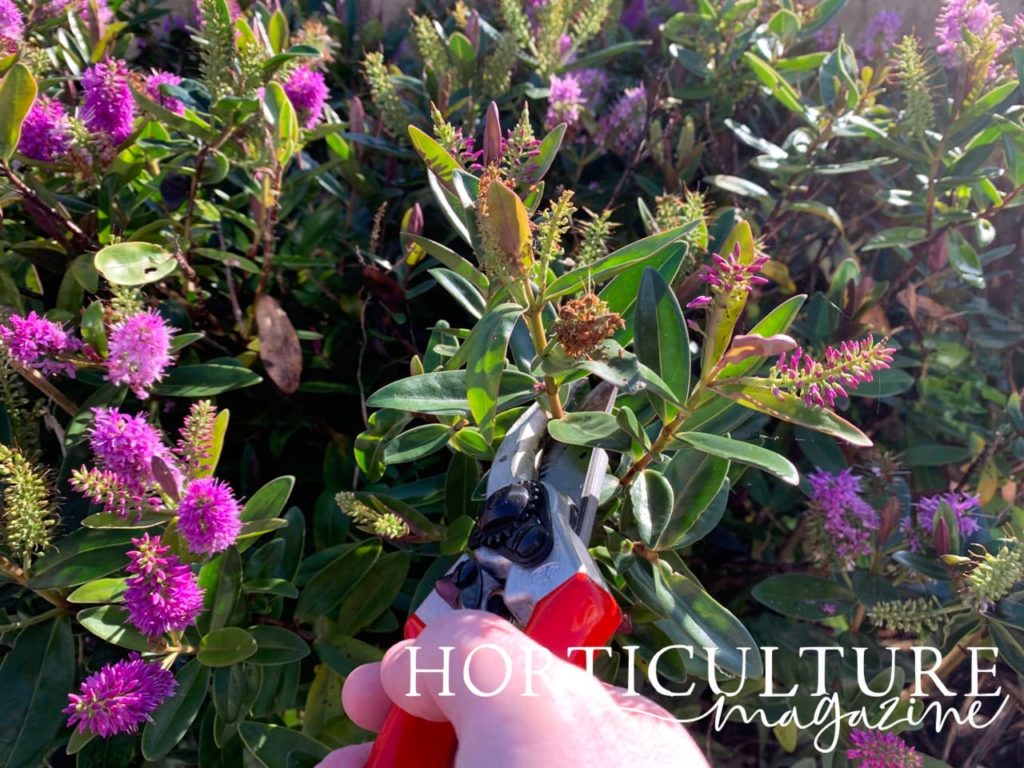
Hebe shrubs generally flower in summer, although some varieties can bloom earlier in spring.
Here in the UK, hebes are best pruned in late summer once the flowers fade and if necessary, again in spring after a cold winter.
Charlie Bewley from Hic Bibi Hebe Nursery in Chorley, recommends pruning back after flowering, making sure not to leave it too late in the season, as this can cause stress to your hebe shrubs.
1) Deadhead Spent Flowers

If the weather is mild, hebes can bloom for a long season and from as early as April onwards.
Once faded, the flowers may begin to look untidy and can be deadheaded with a pair of secateurs, which will encourage further blooms and extend the flowering period.
2) Prune In Late Summer
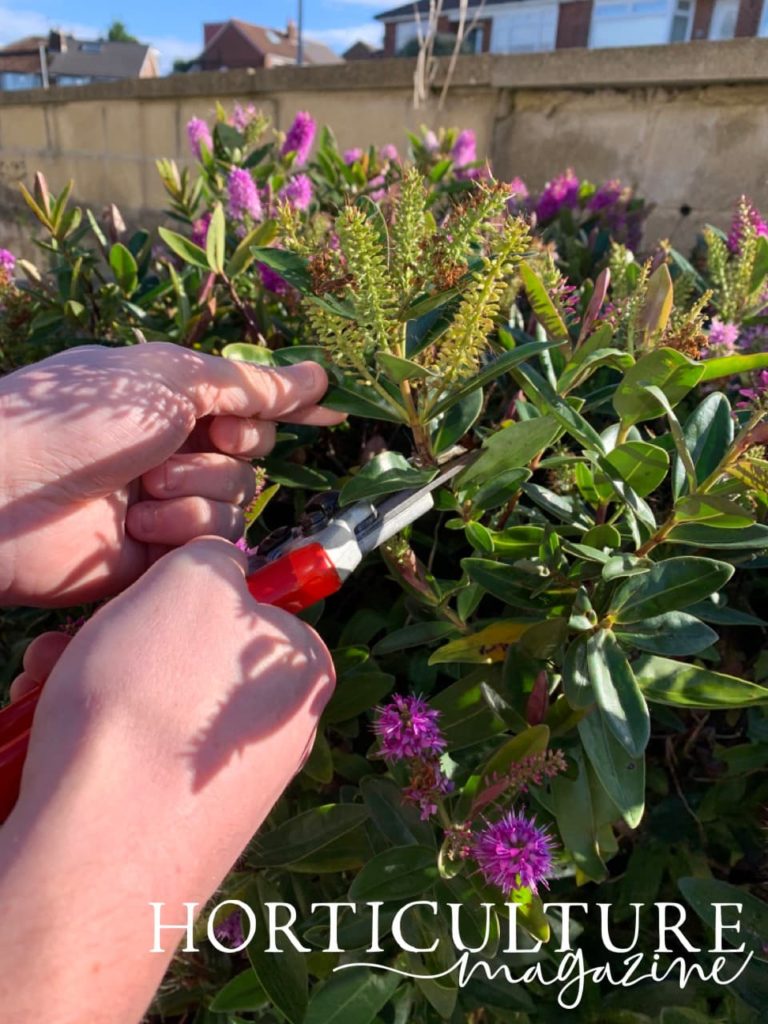
Hebe shrubs are relatively slow growing and generally require little pruning, apart from keeping them to shape and removing any dead or damaged wood.
Hebe shrubs are best pruned in late summer once the flowering period comes to an end and when the shrubs can be cut back to shape using a clean and sharp pair of shears or secateurs.
“Prune regularly and often, rather than all at once, as this can cause stress,” advises Charlie.
As Charlie states, Hebe shrubs do not respond well to being hard pruned and do not tend to regrow if cut back into old wood, so a light prune is all that is required.
At the end of summer up to a maximum of one-third of the foliage can be pruned back to a bud or leaf, in order to keep the hebe to a compact and pleasing shape.
3) Prune In Spring
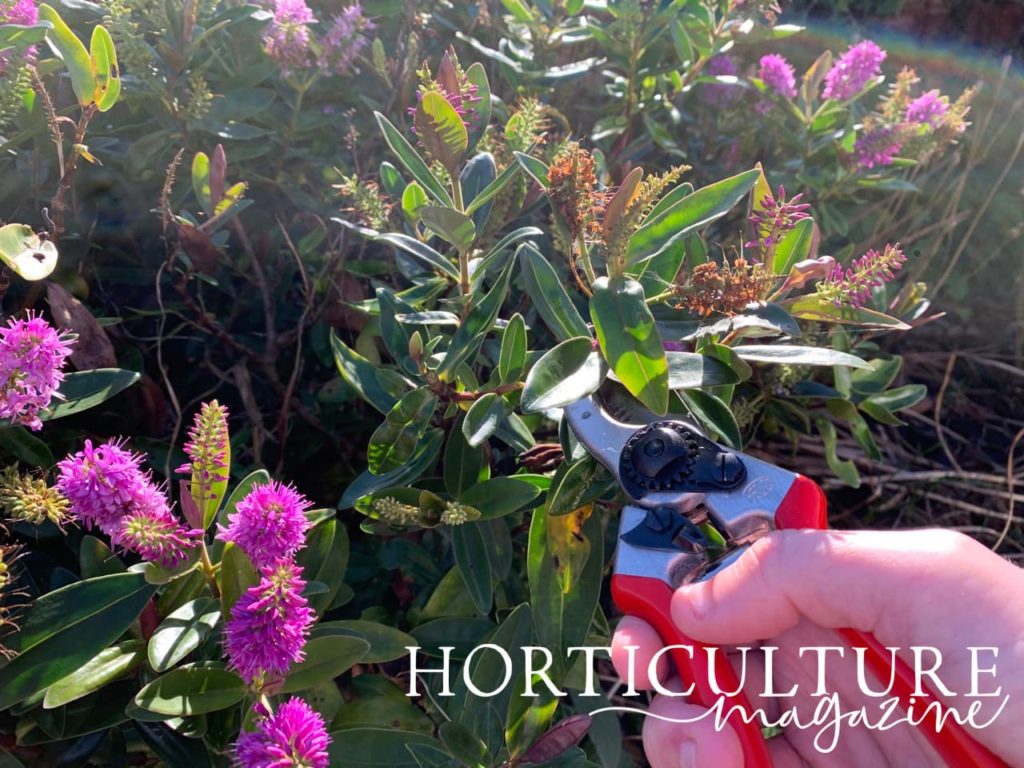
Hebes are hardy shrubs and are rated H4 for hardiness, and will usually tolerate winter temperatures as low as -5°C to -10°C.
However, hebes can struggle in extended low temperatures and during a generally cold and wet winter, especially if the soil becomes saturated, leading to some dieback of branches.
In spring, as the temperatures rise, it is advisable to check hebes for any dead or broken branches and stems and to remove them back to a healthy-looking bud.
Hebe shrubs prefer moist, but well-drained soil and if grown on compacted or heavy soil that can become waterlogged it is advisable to incorporate some organic matter into the soil to improve the drainage.
4) Hard Prune Worn Hebe Shrubs
Over time, hebes can become leggy, misshaped and look as though they have passed their best.
Although general advice is not to hard prune hebes, if you are going to replace it anyway it can be worth trying to see if it regrows.
The best time to rejuvenate a hebe is in March, just before new buds begin to form.
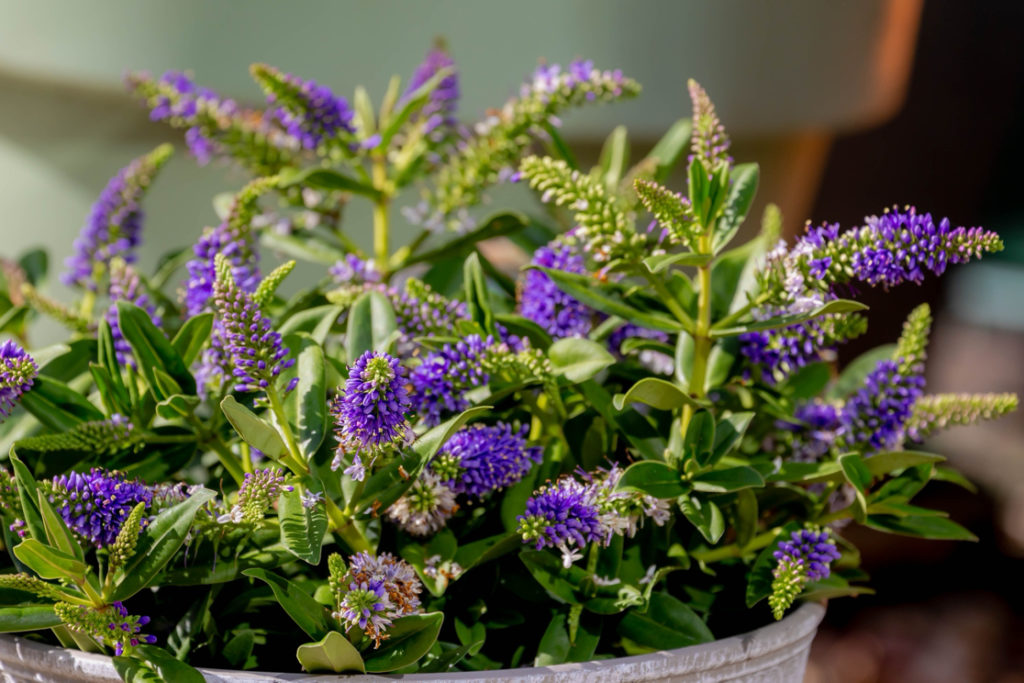
To hard prune, the stems can be cut back to a node about 30cm above the soil using a sharp and clean pair of secateurs.
However, due to the high chance of the shrub not re-growing, it is advisable to take some cuttings in the previous summer to replace it with.
For a less drastic and gentler approach, one-third of the stems can be cut back hard each year, leaving the rest of the plant to carry on.
“To prevent stress, cut back half of the shrub in the spring or summer,” recommends Charlie.
“Wait for it to regrow slightly and then do the other half.”
